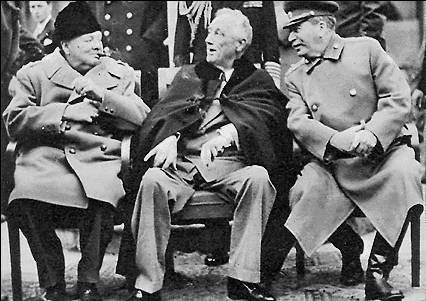How to Moderate a Great Panel
 This topic is a little different from my usual fare. It’s about moderating panels, a function that many of us are called upon to perform at events from time to time. When these sessions go badly, it’s usually because the moderator either hasn’t prepared the speakers or fails keep control.
This topic is a little different from my usual fare. It’s about moderating panels, a function that many of us are called upon to perform at events from time to time. When these sessions go badly, it’s usually because the moderator either hasn’t prepared the speakers or fails keep control.
A lot of people treat panel moderation as a chore, but I enjoy it enough to have done it at least 50 times over the last 15 years. The reward of a successful panel is seeing the audience interact both during and after the event, and hearing that all your panelists enjoyed the experience.
Here are some tactics I’ve learned to make a panel session successful and memorable. Please embellish these tips with your own comments.
Before the Event
1. Know your place. Moderating a panel is akin to conducting an orchestra. Like conductors, good moderators do their work in advance to bring out the best performance from the speakers. I say “performance” because that’s what a panel really is. Each participant demonstrates his or her expertise at the appropriate time without overwhelming the ensemble. Improvisation is encouraged but kept within limits. Musicians will tell you that good symphony orchestras actually improvise a lot, but they only do so when everyone knows the time is right. A panel is no different.
2. Convene a pre-event meeting. I can’t emphasize enough the importance of this preparatory session. A conference call enables all the panel members to get comfortable with each other. It also establishes the ground rules that everyone must live by. Keep the call brief – a half hour if you can manage it – and cover these key points:
- Restate the topic and modify it if necessary;
- Define the audience;
- Describe what the session will and won’t cover (don’t forget the won’t);
- Go over the format: How much time is available? Are prepared presentations permitted? How long can each panelist speak? How will audience questions be handled?
- Summarize questions you plan to ask. Note that those questions may change based upon the flow of the event;
- Ask the panelists if there are any questions they want you to ask. Take these as suggestions, not requirements;
- Confirm a time to meet just before the event to go over last-minute issues.
Take notes during this meeting and send them to all panelists, whether they attended or not. Minimize surprises on stage.
On Site
3. Spend a few minutes one-on-one with each speaker before the event. This is your chance to establish familiarity, answer last-minute questions and learn something that may be useful during the panel. Ask what your speakers have been doing lately in the topic area. I often get anecdotes from these three-minute discussions that I can use in introductions.
4. Be in control. You are the conductor, the ringmaster and the emcee. Your job is to control the flow of the session. If you piss off one of your speakers in the process, that’s okay, as long as you’re fair to everyone. It doesn’t matter how rich or famous your panelists are; there should be no question that you are the boss.
5. Keep introductions brief. Experienced speakers know the discomfort of sitting to the side while a person they’ve never met reads a 500-word introduction in a monotone. Your audience deserves better. Three sentences, that’s it. And don’t read from the bio; instead, paraphrase the bio and include a personal comment if you can. In general, reading from a podium is a bad idea.
6. Be a time Nazi. Time is the most precious resource you’ve got on stage, and when you squander it by starting late or letting participants waste it, you do a disservice to everyone. I personally prefer to forego opening statements whenever possible. If I have to use them, I limit remarks to three-to-five minutes and don’t let responses to questions run over 90 seconds. You can set whatever limits you want as long as you communicate them in advance and enforce them on stage.
What to do about speakers who don’t listen to you? I start by shooting them a glance when their time is almost up. If they keep going past the cutoff point, I stand and walk purposefully toward them. If they still don’t get the message, I interrupt at the first opportunity with a good-humored comment and take back the stage.
Be fair to everyone. If you let one person run over, you penalize everyone else. You can even make a game of it. I was once asked to moderate a Power Panel at Comdex during its heyday. I had five panelists and a controversial topic that would stir up a good deal of discussion. I told the speakers in advance that I was going to bring a bell and gong them if they went over time. I did that and even staged a fake wrestling match for the mike with one passionate speaker. The audience and the panelists enjoyed the theatrics and the session was a success.
7. Maintain constant eye contact with your panel. Your speakers should be able to tell you with a glance that they want to address a question or follow up on someone else’s comments. Don’t be afraid to call on them directly. Bridge the discussion whenever you can. Look for opportunities to create a segue, such as “Sarah, John just said we should do X. Do you agree?”
8. Go off script. Never stick to a prepared set of talking points or questions if a good conversation is developing along other lines. Make sure your panelists know in advance that you retain the right to go off script. Keep a notepad in front of you at all times and jot down points to bring up later when the time is right. It’s great when you can say, “Michael, you said a few minutes ago that that we should do Y. In light of what Stephanie just said, do you still believe that?”
9. Be ruthlessly fair. Group discussions tend to be quickly dominated by a few strong personalities. Your role is to equalize. If one or two panelists start hogging the microphone, direct questions to others for a while. Remember that not everyone has to answer every question. My rule of thumb is to permit two panelists to speak unless others indicate they want to get in.
10. Control the audience. We’ve all attended question-and-answer sessions at which an audience member stood up and delivered a sermon or diatribe disguised as a question. I have little patience for this. When a question exceeds 30 seconds in length, I may interject with, “Get to the question, please,” or the somewhat more acerbic “Is there a question in here?” People who abuse Q&A sessions are rude. You sometimes have to be rude right back to restore order.
If some of these tactics sound a little heavy-handed, I don’t apologize for them. Good panels really are like orchestral performances: They work best when everyone contributes to making each other look their best. Your satisfaction is to see smiles on the faces of your panelists and your audience as the session ends and to have people walk up and tell you, “That was great!”
Podcast Daddy
 Doug Kaye introduced me to podcasting. It was 2006 and I was just getting the hang of using my iPod for something other than music. I stumbled across IT Conversations and was hooked. Here was a library of hundreds of speeches, lectures and interviews from the leading minds in technology. Presentations like Eben Moglen’s 1,000-year tour through the history of memory and Steve Wozniak’s autobiographical history of Apple remain some of the most memorable lectures I’ve ever heard, and I wasn’t even there!
Doug Kaye introduced me to podcasting. It was 2006 and I was just getting the hang of using my iPod for something other than music. I stumbled across IT Conversations and was hooked. Here was a library of hundreds of speeches, lectures and interviews from the leading minds in technology. Presentations like Eben Moglen’s 1,000-year tour through the history of memory and Steve Wozniak’s autobiographical history of Apple remain some of the most memorable lectures I’ve ever heard, and I wasn’t even there!
Doug is still podcasting, only he’s got a much bigger goal in mind now: to organize the world’s library of recorded spoken information into a single card catalog. SpokenWord.org is an experiment in what is being called “curation,” or the organization of assets from other places into master directories (I wrote about this recently)
. David Strom and I recently got the chance to stretch out for an interview with Mr. Podcasting himself. Doug has some interesting observations about why podcasting is widely (and mistakenly) perceived to have underperformed its potential, the unique relationship people have with the spoken word and the possibilities for curation to cure information overload. Listen to the podcast with Doug Kaye.
Tip of the Week: iWisoft Free Video Converter
If you watch a lot of online video, you know what a mess format incompatibilities can be. QuickTime doesn’t read Windows WMV files, PowerPoint can’t see Flash FLV and videos that look fine on your PC screen look terrible when played on your HDTV.
Video conversion software has historically commaned licensing fees of $50 or more, but I recently came across a free program that handles everything I throw at it. iWisoft Free Video Converter supports a dizzying number of formats for devices ranging from cell phones to DVDs. It can even crop and adjust video, although I’ve never tried those features. I’m just thrilled to have those YouTube video downloads ready for PowerPoint with a couple of mouse clicks. Learn more and download here.
Just For Fun: Dog-Owner Lookalikes
 This was my fourth year at Pet Rock, a local celebration by dog and cat lovers of their best friends. We’ve all heard the cliché that dog owners look just like their pets, but I have found it to have a lot of truth. A couple of years ago, I started training my camera on people who I thought looked just like their dogs, and the collection is now up to 36 images. Here’s a slideshow. if you have any photos of your own like this, tag them “lookalikes” on Flickr and let’s share!
This was my fourth year at Pet Rock, a local celebration by dog and cat lovers of their best friends. We’ve all heard the cliché that dog owners look just like their pets, but I have found it to have a lot of truth. A couple of years ago, I started training my camera on people who I thought looked just like their dogs, and the collection is now up to 36 images. Here’s a slideshow. if you have any photos of your own like this, tag them “lookalikes” on Flickr and let’s share!

